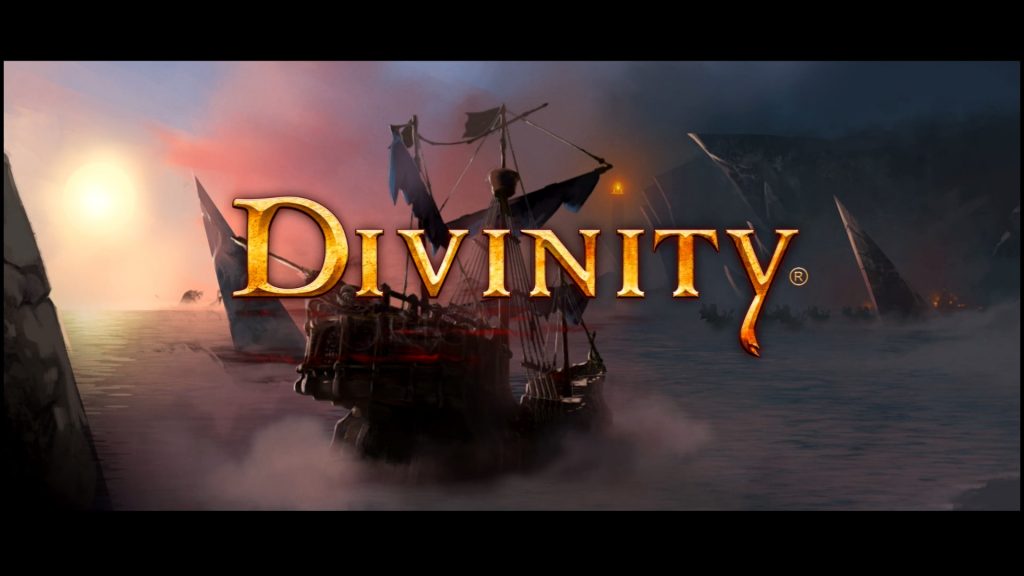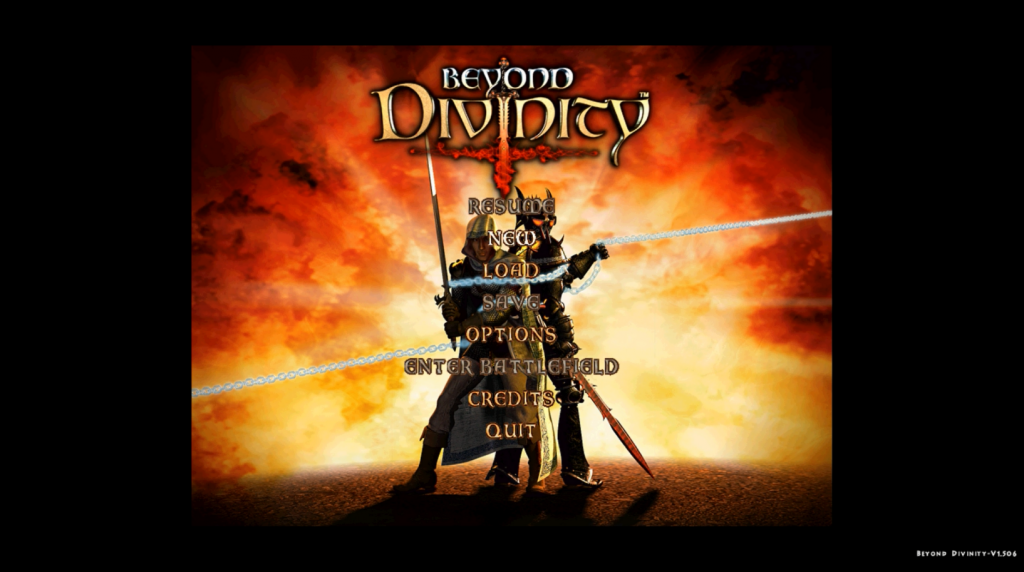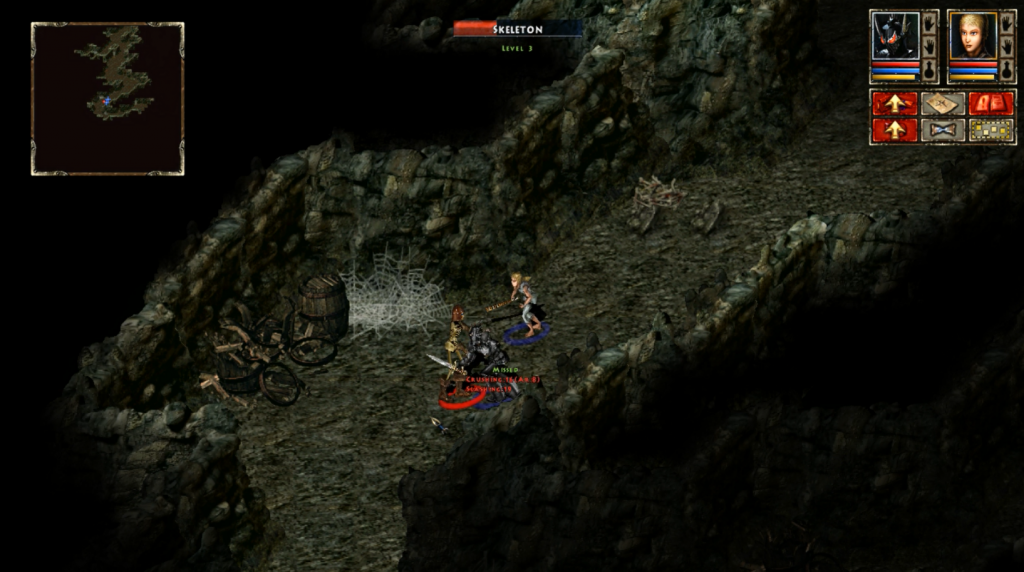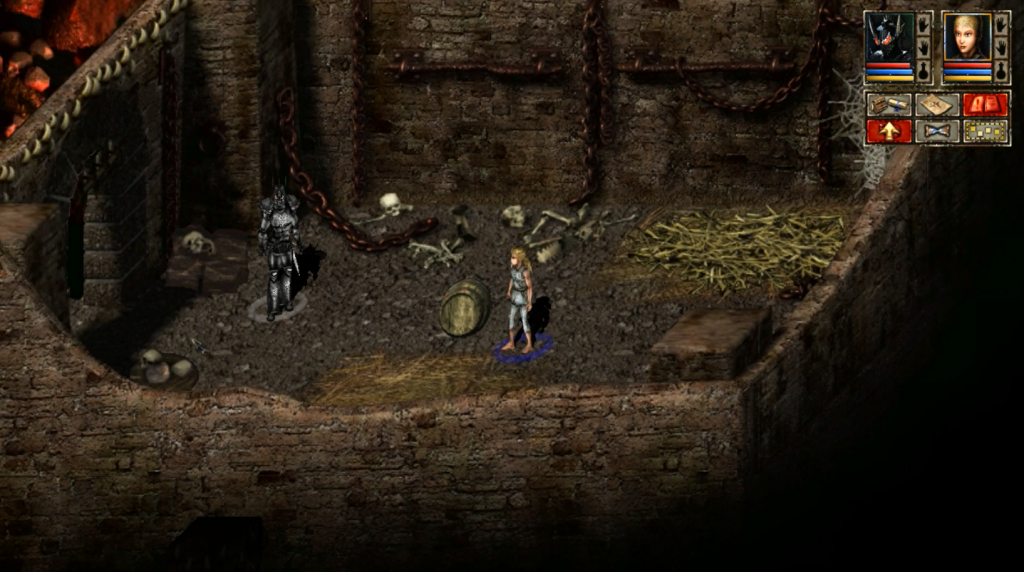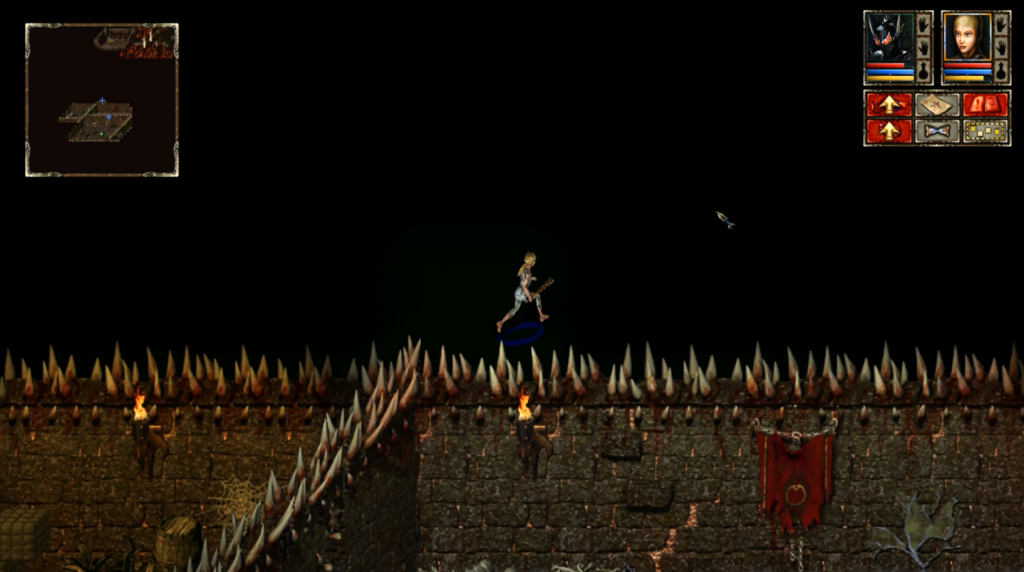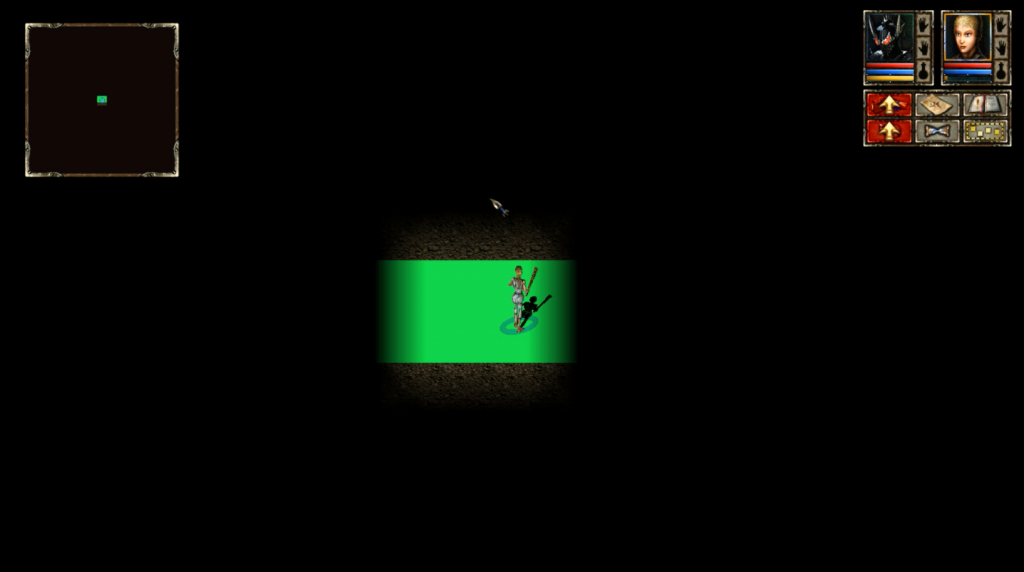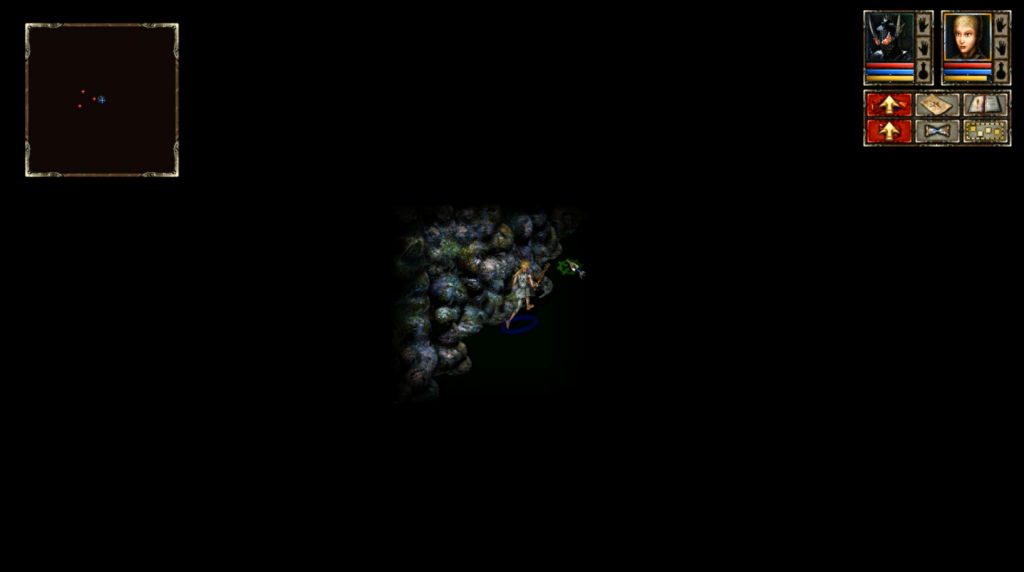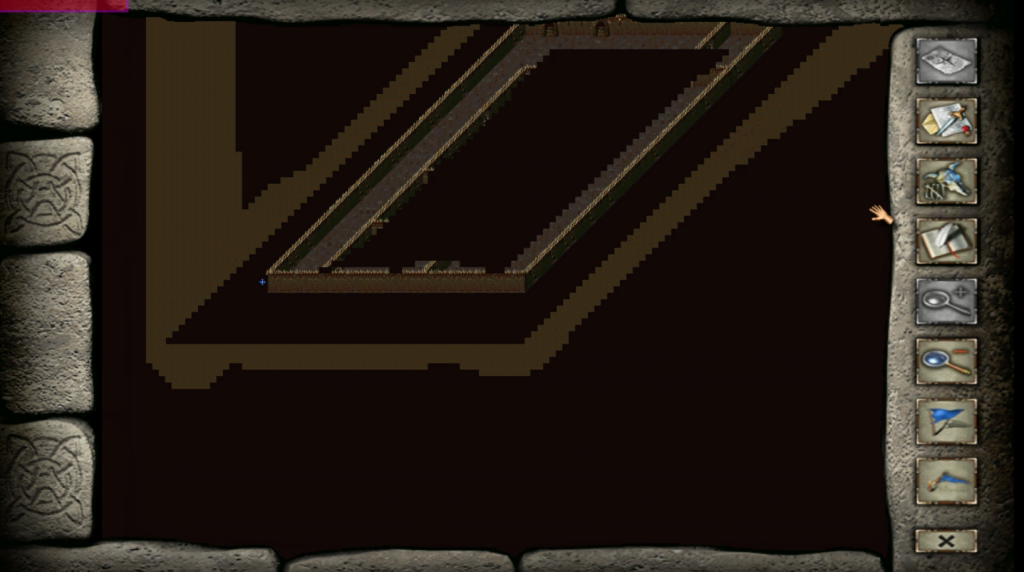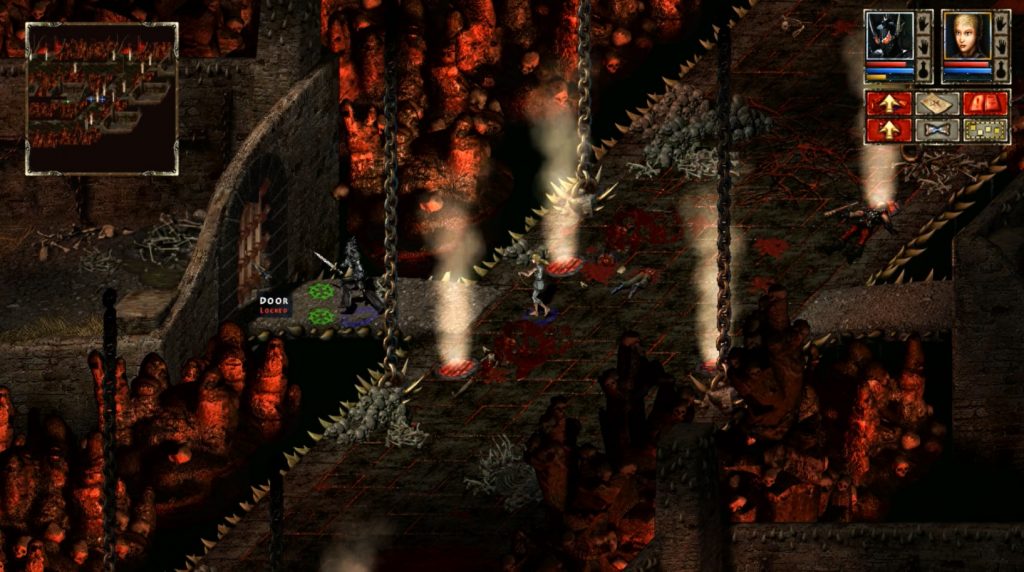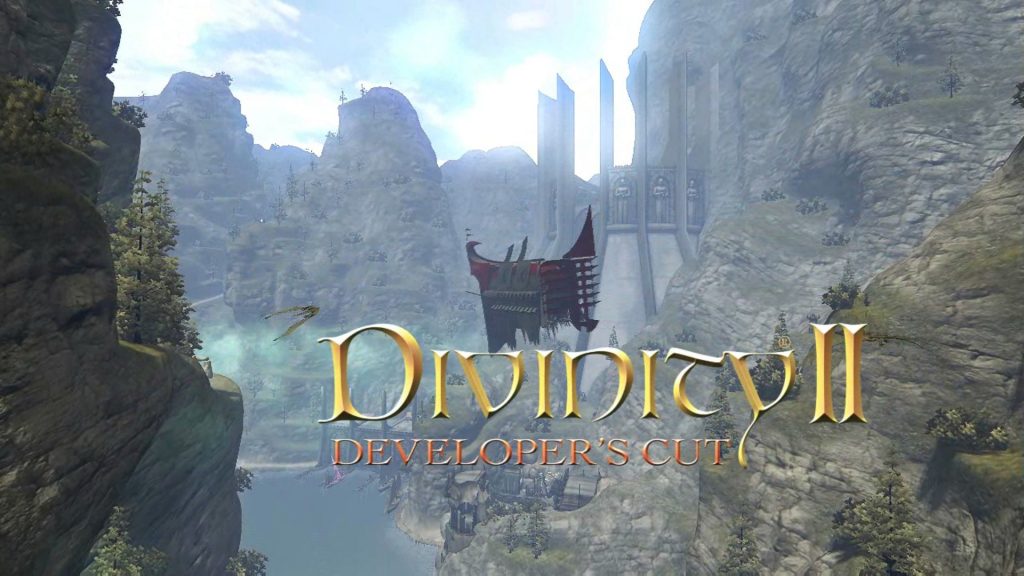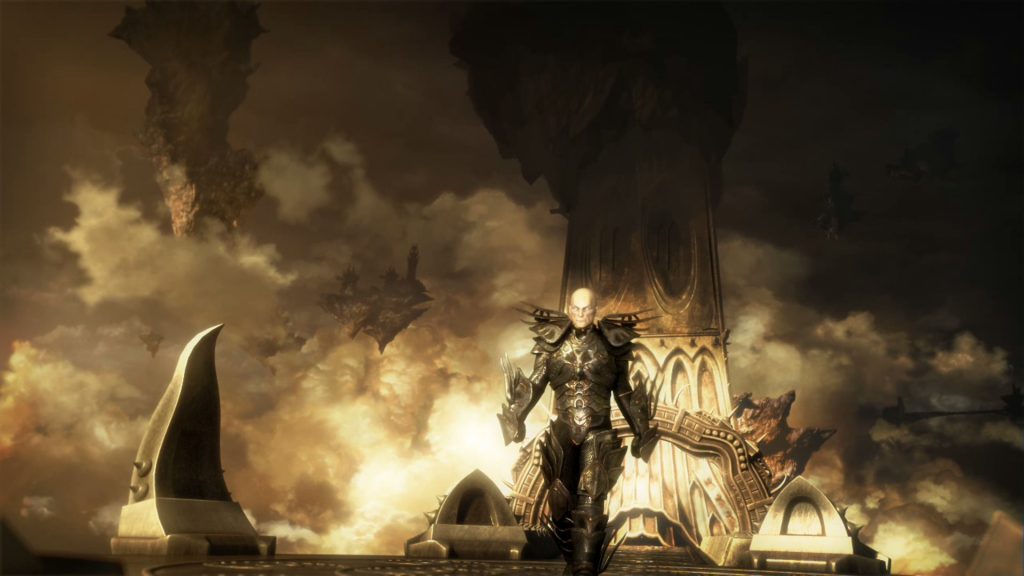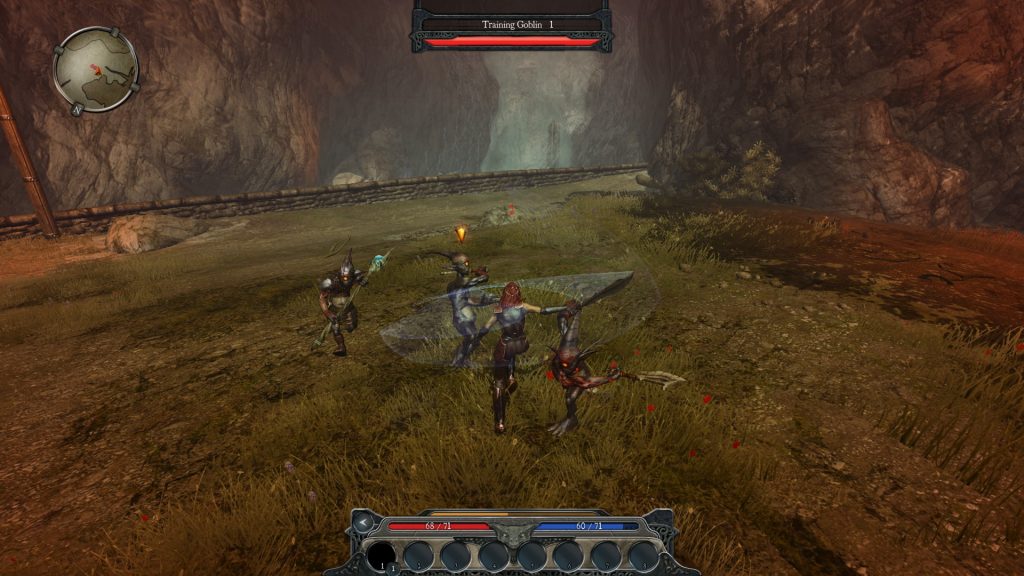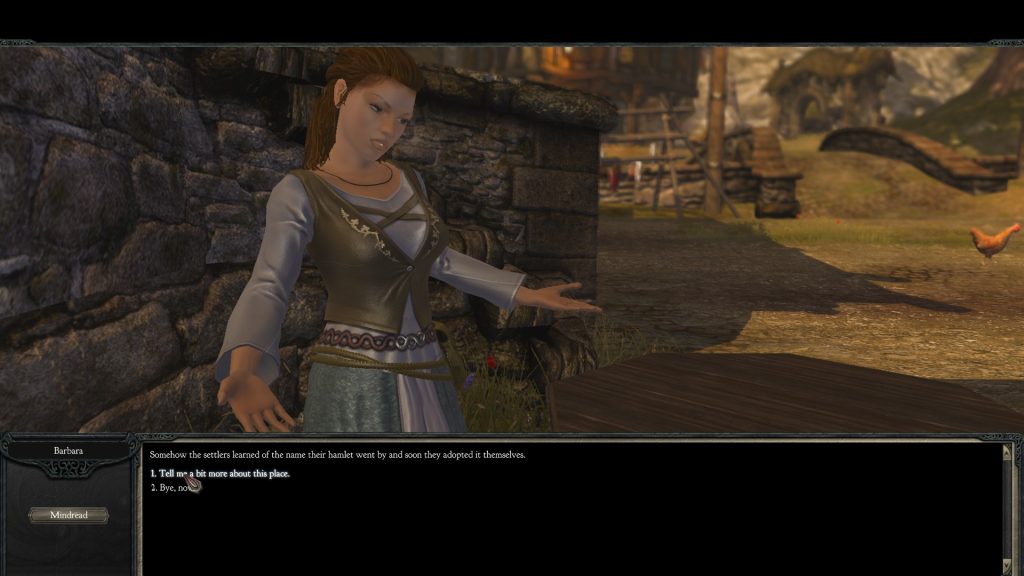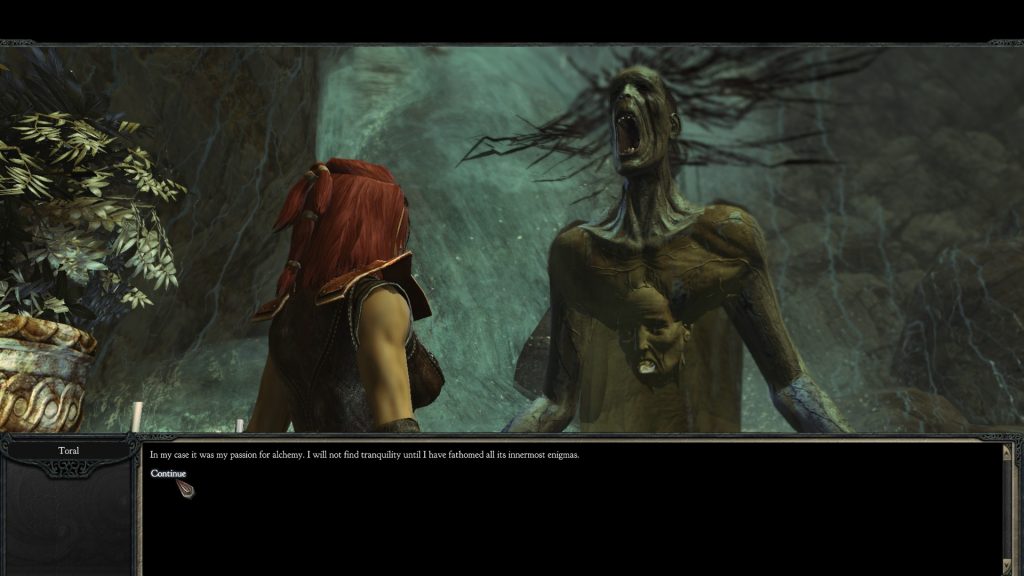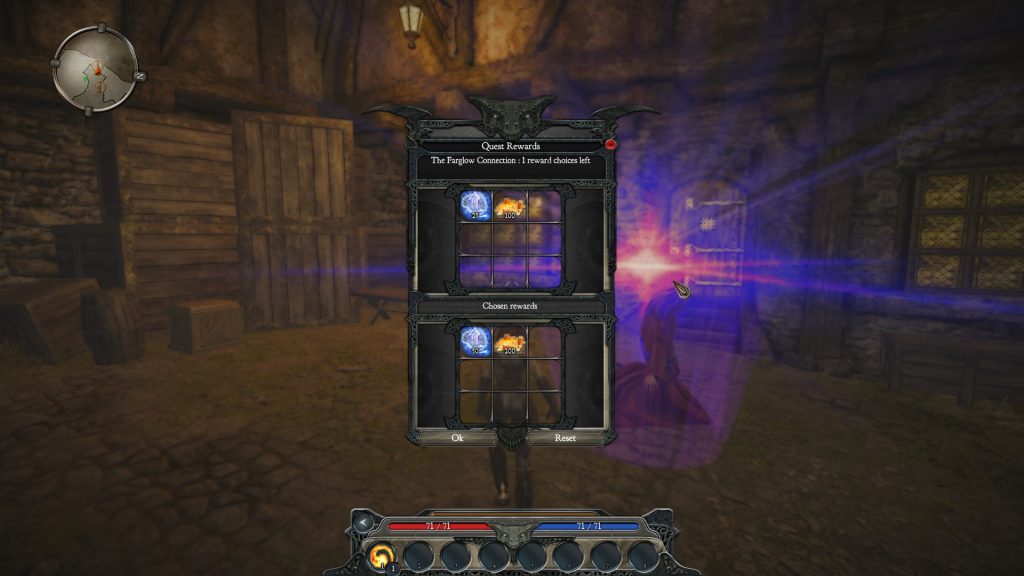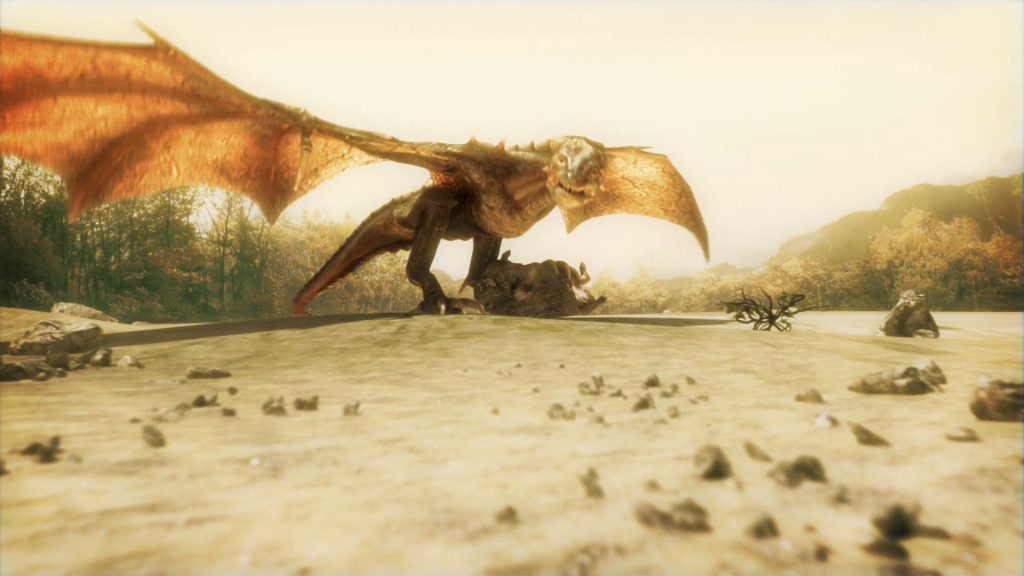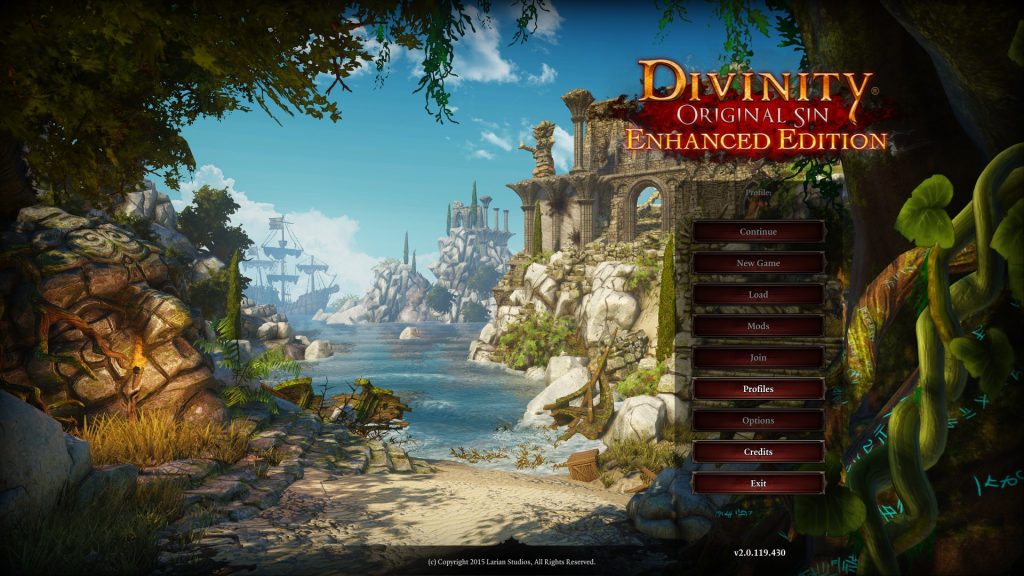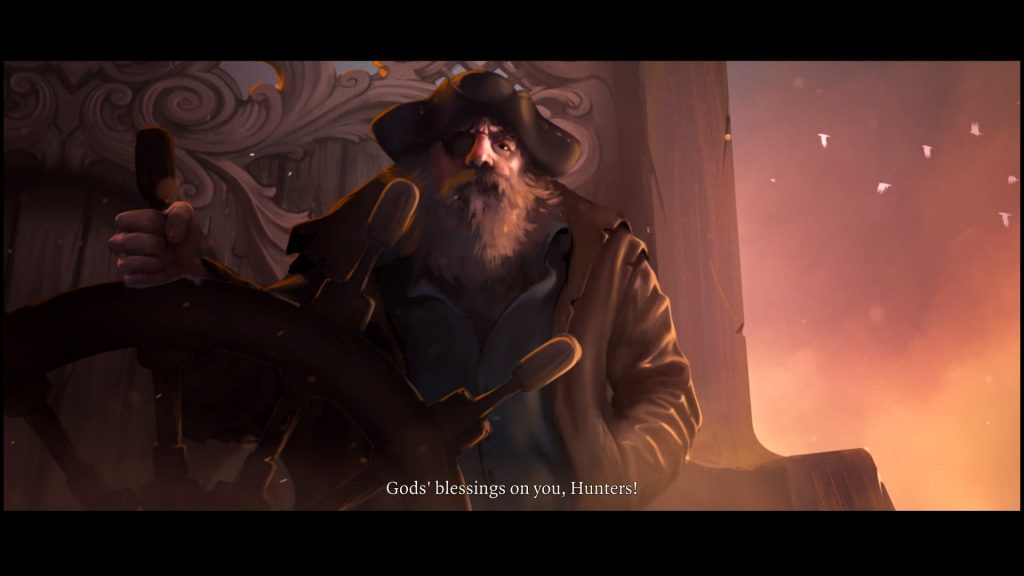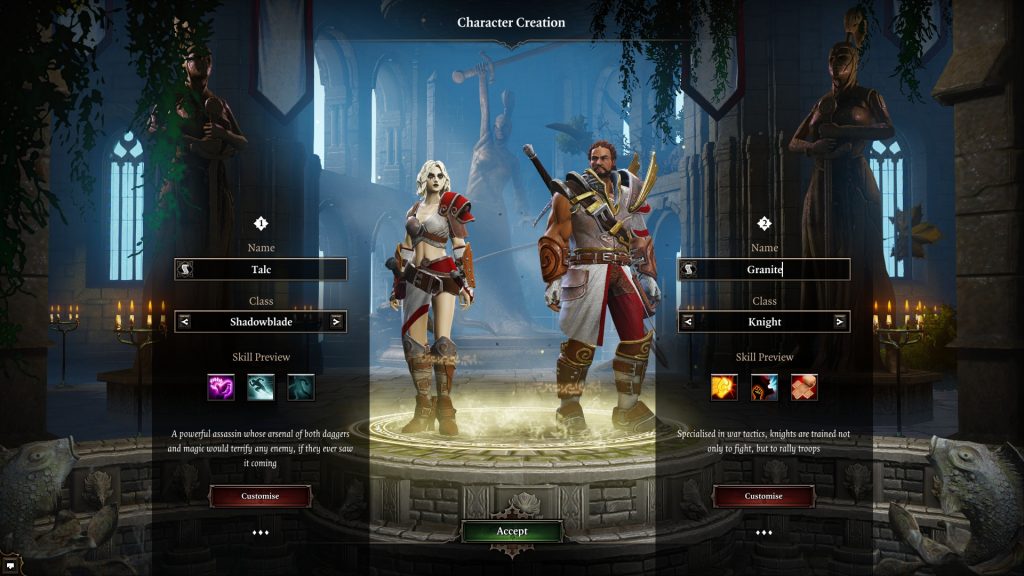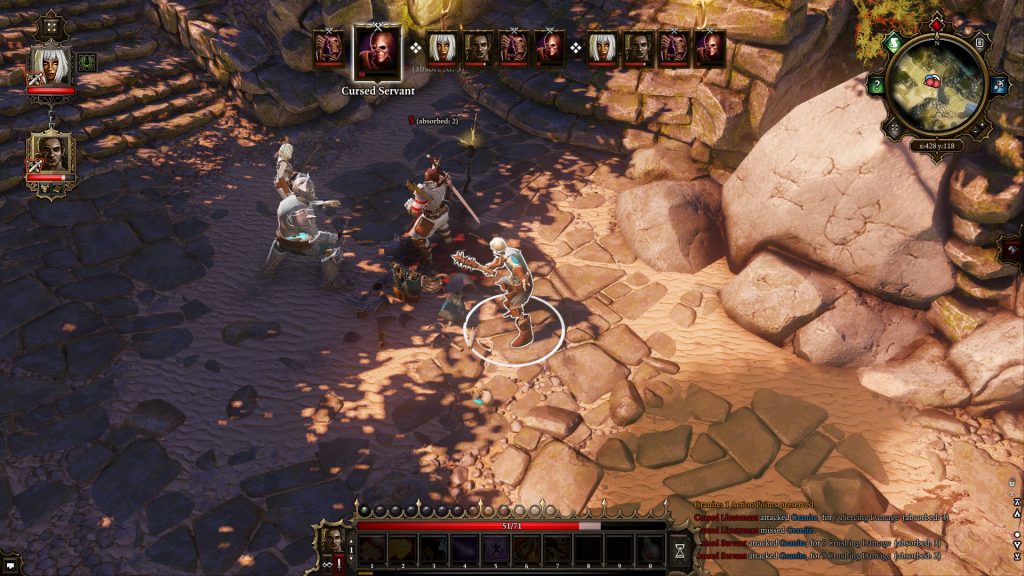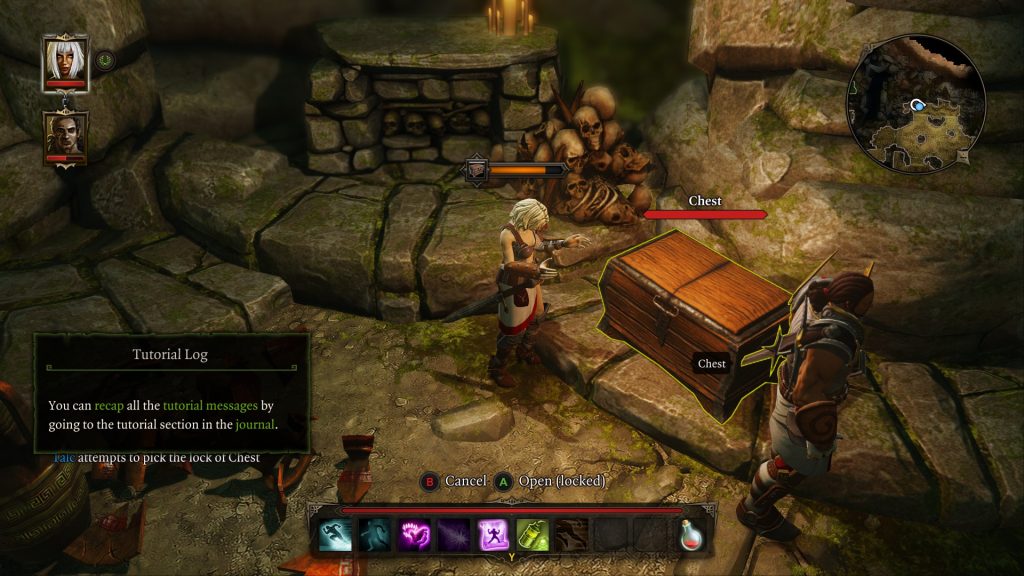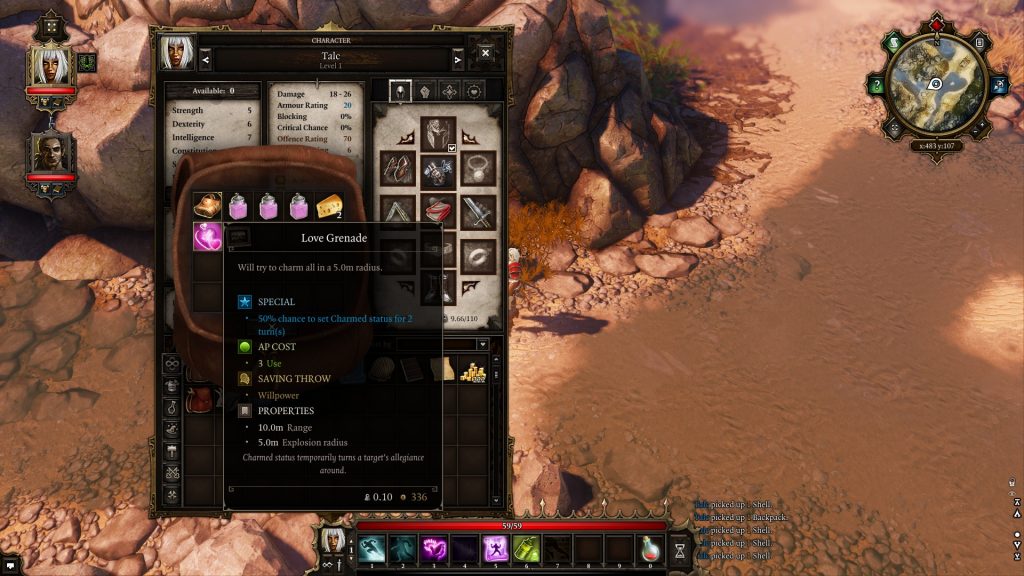Some days I wonder if RPGs are dead. Sometimes I worry the future of RPGs are relegated to only ones with the words “Bioware” appearing on the screen as I turn them on. Apparently I just need to try more games, because either I’m an idiot, or the Divinity series is freaking awesome.
DIVINE DIVINITY – Tier One
BEYOND DIVINITY – Tier One
This game is certainly interesting. Character creation allows you to play as a child. Your character’s soul is tied to a death knight. I fell off the edge of reality. Let’s address those in order as we take a look at…
First though, what is Beyond Divinity? Well, much like Divine Divinity, it’s a top-down isometric Diabloesque, except that you control two (and only two) party members. Other than that, mechanically it’s the same as before–drag items on the game world to scoot them around or plop them in your inventory, loot spills out of corpses like pinata candy and leveling up gets you skill points to spend on abilities.
So, you may not have guessed this, but by technicality, the personification I prefer of Chezni is that of only a child. As the vast majority of RPGs do not allow child character creation, oft providing an age range usually starting around 20 and ending at 50 instead, I begrudgingly default to whatever character model is made available. Beyond Divinity? This might be the first RPG I’ve ever played where you could create an adult *or* a child and the storyline is indifferent to your selection. I know it doesn’t seem like much, this was a pretty big deal to me. That being said, if we take a more objective viewpoint at character modeling, we’ve progressed from the pre-rendered sprite-work of 3-D models found in Divine Divinity to actual full-on 3-D models. The backgrounds are still pretty sweet tiled 2-D images but it works well. As a bonus, we can also now zoom in to quite a considerable degree of closeness. While the environment does get a bit blurry, it does solve the problem from the original that finding switches or buttons hidden within the environment is made much more manageable.
Plotwise, we’re in some other-world dimension where a… giant black suit of armor breaks you out of prison, exposition dumps you and says, “Oh yeah, btw; our souls are fused.” Apparently some sage named Samuel did this for… reasons… or something. Our job is to either go find Samuel and kick his @$$ to get him to put us back the way we were, or beg some witch named Isolde to have pity on our mortal(?) souls. The game has a very Baldur’s Gate~ish feeling but with the action of a Diabloesque. I was sort of interested in figuring out what was going happen but then… “it” happened. During a cutscene, I lost control of Chezni and, well, he walked off the edge of the world. And then the real fun began.
At first it was amusing. I ran around the outside of the castle I was stuck in, looking in through the fog of war at what little I could see through the walls. Once I’d circled the entire compound, I began to get a bit cross as I noted, with no lack of frustration, that I had not once saved the game meaning that I couldn’t reload to undo the bug. Deciding to make the most of my somewhat odd circumstance though, the whole thing became surreal, as I began playing an entirely different kind of game. I continued to wander about in the dark until I bumped into the outside of the prison compound where the game began. Okay, that taught me that the game simply renders multiple sections of an area on a single map–that made sense. What became weird was when I tried to locate the boundaries of the current area… to which I was met with several odd textures, including a glowing green bridge-type thing and then what appeared to be an empty dark void.
The green bridge was probably a missing texture of some sort but it created a sort of supernatural feeling–an unexplainable landmark in a world that I truly could not predict. Within the confines of an actual game, I can still glean pieces of intended design or constructed purpose through the game’s structure. Here however, it was like walking in a dream–anything could happen. After a while of heading north, I decided to shoot East where I ran into a completely different tileset and using the minimap, several monsters and a couple NPCs. I could not see them however, and while they could have just been a part of the intended level that I was supposed to access had my mishap not occured, they still struck me as otherworldly beings of whom I could see traces of but never actually meet. It all very much felt like the plot of Stranger Things, except I was the creature from the upside-down world.
Eventually, I ended up in a location where the map actually filled itself in and the entire screen was illuminated by an unseen light source. I also hit my first actual wall that stopped me from progressing. It was not a visible wall, but an simple end, where the game no longer allowed me to move past. As this was discovered in the East, I went North and found a similar wall after a few minutes. West was met with an identical prospect. Heading south though, I found what appeared to be a practice castle–perhaps the remnants of a game-designer’s testing grounds? Who knows. At this point, I’d been playing well over an hour, so I decided to call it quits.
From the bits of BD that I did get to play, it felt as good as the first with some clear quality-of-life improvements. I have no idea if the overall content will hold up as well as the original (I still need to finish the original) but it definitely feels like a strong title and I’m intrigued to learn more. First impression nets it Tier 1, with a completed final impression to be produced after I manage to beat Divine Divinity.
DIVINITY II: DEVELOPER’S CUT – Tier 1
Wow. Just… wow. Am I growing soft? Is the wool pulled over my eyes? Am I missing something? Or is yet another game from this company Tier 1 material, in the form of…
I’ve put previous Divinity titles in Tier 1 with a few minor reservations. Understanding the limitations of their genres, I felt like they both were solid titles that may not have been the most exciting of T1 games, but were sort of low to mid-level for their category. More than once I wondered if it was the nostalgia for my love of Baldur’s Gate that granted them access to this category, or possibly if I was a sucker for well-made Diabloesques. However, Divinity II mechanically speaking is not like any game I played in my youth, and so it has no feeling of nostalgia associated with it… and yet I still plant it in our highest tier. And not just our highest tier, but this one excited me. I don’t get that very often when I play games anymore, which concerns me. Am I completely misguided about the company making these games or… did I actually find a company that has produced a set of games that I legitimately like?
Mechanically speaking, Divinity II swerves rather far away from its roots. Whereas Div I and Beyond Div were top-down two-party-based tactical Diabloesques, Div II plays out as an over-the-shoulder fully 3-D real-time-combat world. You still get skill points from leveling up, equip gear and click on enemies to fight, but dodging projectiles, jumping and flashy skills are now all part of the mix.
You are a slayer graduate. You’ve just been implanted with the memories of a dragon. While this has the side-effect of making you forget a large chunk of the most recent years of your life, you also gain some fun dragon powers, most notably the ability to give up some of your EXP to mind-read NPCs. Golden Sun (a powerful RPG, if you’ve never played it, I beg you to try it) had something similar to this with Ivan’s ability to read minds on the overworld. This allowed the creators to have the NPCs be direct in their conversations, and if you as a player wanted more from them (perhaps you were bored, or wanted more lore) you could indicate this to the game by casting the mind-read spell. This allowed the player to gain interesting information that they felt like they discovered, instead of feeling like an NPC was info-dumping them. I mean, after all, you can’t really blame someone for expositioning you if you intrude upon their thoughts, can you? Back to Div II, it feels much the same. Reading people’s thoughts requires a legitimate sacrifice (EXP) but the reward is the satisfaction of gleaning secret information from someone who may not exactly be willing to part with it, nor aware that you are obtaining it.
The mood of the game is very much that you are “the special,” but what makes it work is that you are a special. There are others that you travel with that share your gift, and so while it is fun to walk around and absorb all the “oohs” and “aahs” of being some fancy Slayer, it also doesn’t feel quite so silly, because there are others with you that help bring things down a notch because they’re more experienced than you. For instance, talk to a few of them and they’ll tell you how they remember their early days as a Slayer. Try to read their minds and they laugh at you mentally, telling you that you’ll need to be stronger than that to get a good read.
I am only an hour into this game, but the setup just feels so fun. I think the only concern I might have is that if I take a step back, calm down and try to look at the game objectively, it becomes apparent that the style of play is heavily influenced by MMORPGs. You move about in a 3-D world and click a monster to auto-attack. You have a string of abilities at the bottom of the screen that are activated by the number keys. You take quests from NPCs with yellow arrows on their head. You choose rewards from a list of goodies when completing said quest.
This could be a good or a bad thing (and I hate admitting it could be a good thing). Inherently, MMORPGs are not bad. Some of them have interesting and exciting mechanics that require a fair amount of strategy to execute in order to be competent at. The problem lies in that whereupon you master the current required strategy to be effective for the level and area that you are at within them, the games then typically require you to execute the same exact pattern several hundred more times before the barest inkling of allowance of progression. Being a single-player game not built upon PvP competition driving the sales of microtransactions, it’s possible that this pitfall will be completely avoided. I hope so, because while I will finish these games in order, I will certainly look the most forward to playing this one in the future.
DIVINITY: ORIGINAL SIN – Tier 2
Well I mean, it’s only Tier 2 because why would you play this one if you have access to the Enhanced Edition below? I’m sure it’s a fine game otherwise.
DIVINITY: ORIGINAL SIN ENHANCED EDITION – Tier 1
Okay, nope. That’s it. I’m done. I take my hat off. I admit defeat. You win Larian studios. You win.
I actually feel bad. Lepcis tried to get me to play this one with him years ago, but through a combination of the normal complications of trying chat casually via messenger and my back-then laggy computer, I didn’t get to enjoy much of what Divinity Original Sin had to offer. Now that I’ve set aside some time to take a look at the Enhanced Edition, I simply have no words. I cannot stake a lasting complaint about this entire game series. D:OSEE anchors the whole string at Tier 1, just as its predecessors did.
Where do even start. Where can I start? Character creation I guess. Character creation was one of the weaker aspects of the previous Div titles–no longer. A solid set distinct of skin tones, hair styles and faces finally make character creation feel honest in this title. True, you’re stuck with the same body type for each respective gender, but it’s a small complaint when aligned with the limited selection of the other Div games. In addition, we now have a solid set of 11 classes to choose from, ranging from the typical (figher, rogue) to the atypical (shadowblade, battlemage). Aside from that, there are dozens of skills, perks and abilities to choose from, all laid out in an easily accessible HUD friendly manner. With all this information easily accessible at mouse-tip, it was easy to spend as much or as little time as I wanted, molding my two characters.
The intro’s mood is a tad melodramatic, but the game picks up quickly and intuitively. Playing at first with the keyboard, I was running around, looting chests, killing monsters and learning the take-turn combat system from generally helpful pop-up windows that were well-timed and explained the game mechanics appropriately and simply. Oh right, I failed to mention sooner–the game is take-turn combat, which is a departure from every other Div title so far. I have to say, it works just fine and in spite of lacking a grid it feels like playing a tabletop game of D&D, what with the backstabbing, rolls to hit and attacks of opportunity.
What really pushed me over the edge–and forgive me if it sounds silly–was my absolute skepticism of the integrity of the game’s two-player capabilities via controller functions being absolutely trounced. Noticing that the game seemed to support couch co-op, I investigated the matter and discovered that it was only doable via controller. I thought to myself, “Now, this is a decent game it’s plenty polished, but there’s far too many things you need to interact with in the game to be able to play it via controller, let alone co-op. I was wrong. Swapping over to my trusty pad to see how bad it was, I was amazed at how the game was entirely playable via controller and in most cases, intuitively so. Nothing was sacrificed either. I thought, “Surely you can’t throw or move objects with the controller.” Nope, works just fine. “Surely you can’t manually sheath or unsheath weapons, sneak, target specific items in the environment, search for hidden items, place/combine/hold items, access all of your skills, items, inventory, check logs books, save the game, check the map, swap to another player, give them order and manage your character’s gear, all on one controller. Well, as you may have guessed, you really can.
This is one of those extremely rare cases where this game is Tier 1 co-op and single player material and I’m not sure which one I want commit to first as they both seem equally valuable. Add to that, the generally amusing dialogue between the characters, the sense of simple but recognizable adventure and the extremely player friendly while not being dumbed down style of the game sets D:OSEE a true cut above the rest. As I play through these titles in the future, I’ll be sure to let you know if my opinion changes, but in light of this flood of T1 games, I’m worried that I’m going to have to start raising my standards even higher than they already were.
